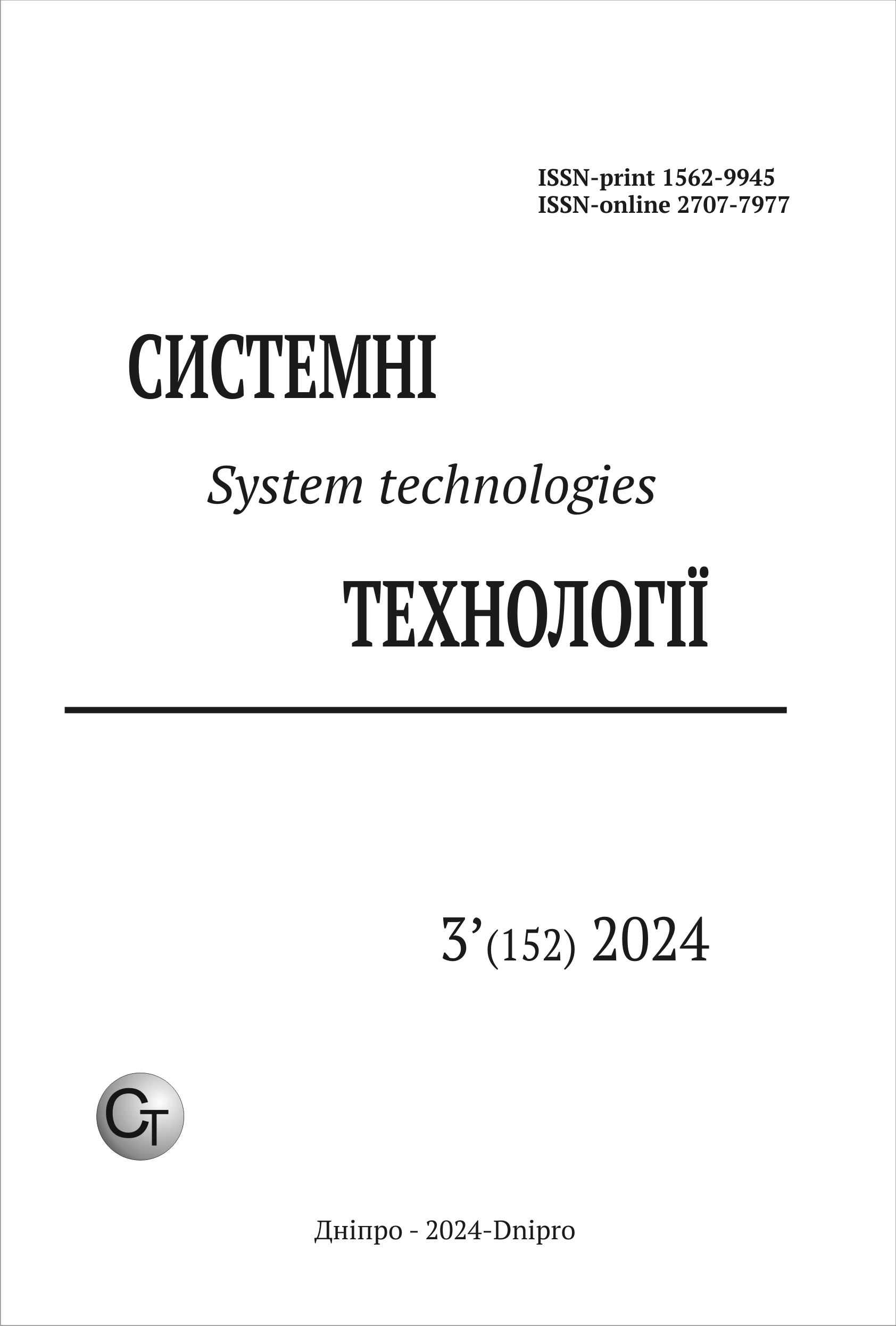АНАЛІЗ ТЕХНОЛОГІЧНИХ СПОСОБІВ МІНІМІЗАЦІЇ ЗАЛИШКОВИХ ВНУТРІШНІХ НАПРУЖЕНЬ ПРИ SLM
DOI:
https://doi.org/10.34185/1562-9945-3-152-2024-01Ключові слова:
адитивне виробництво, залишкові внутрішні напруження, параметри, SLM -технологія.Анотація
Адитивне виробництво (далі –en. АМ) є сучасним комплексом технологій, які дають змогу швидко та якісно створювати вироби з унікальною геометрією, яку неможливо або складно виготовити традиційними способами виробництва. Наразі дослідники приділяють увагу двом великим напрямкам, а саме системам якості АМ та пошуку нових закономірностей у вже доволі відомих матеріалах, що виготовлялися традиційним способом. Дана технологія має ряд переваг для виготовлення виробів авіаційно-космічного призначення, але, як і всі технології виробництва, дана технологія має ряд недоліків та проблем. Залишкові внутрішні напруження є однією з особливос-тей металевих матеріалів, виготовлених шляхом пошарового сплавлення за SLM -технологією, але вони можуть значно впливати на механічні властивості та геомет-ричні параметри. Їх присутність є особливо важливою для матеріалів АМ, що немину-че призводять до значних внутрішніх напружень. У зв'язку з цим важливою є мініміза-ція залишкових напружень в процесі виготовлення деталей за технологією SLM. Для запобігання відхилень за геометрією деталі необхідно враховувати співвідношення між щільністю питомої енергії, що підводиться, і її поглинанням під час процесу. Однак, оптимальні технологічні параметри і стратегії побудови SLM -процесу для полікрис-талічних матеріалів складно передбачити, оскільки якість виробу залежить від вели-кої кількості факторів. Пошук шляхів попередньої оцінки і розробка заходів щодо зни-ження залишкових напружень при виготовленні деталей за технологією SLM є актуа-льним завданням сучасного матеріалознавства. Таким чином питання зменшення впли-ву внутрішніх напружень потребує фундаментального розуміння їх впливу на геомет-ричні параметри та службові характеристики матеріалів АМ.
Посилання
Vayre B., Vignat F., Villeneuve F. (2012). Metallic additive manufacturing: state-of-the-art review and prospects. Mech. Ind.. 13. Р. 89–96.
Gu D. D., Meiners W., Wissenbach K., Poprawe R. (2012). Laser additive manufacturing of metallic components: materials, processes and mechanisms. Int. Mat. Rev. 57 (3).
Р.133–164.
Wong K. V., Hernandez A. (2012). A review of additive manufacturing, ISRN Mech. Eng.
Р. 1–10.
Brackett D., Ashcroft I., Hague R. (2011). Topology optimization for additive manufacturing. Proc. SFF Symp. Austin Texas. Р.348–362.
Adjamskyi S.V., Kononenko G.A., Podolskyi R.V. (2020). Influence of technological parameters of SLM-process on porosity of metal products. The paton welding journal. 10. р.13-19. DOI: https://doi.org/10.37434/tpwj2020.10.03
Adjamskiy S., Kononenko G., Podolskyi R. Mechanical properties of heat-resistant superalloy Inconel 718 obtained by selective laser melting and heat treatment under different load directions. Scientific Journal of TNTU (Tern.). 2020. 99 (3). Р. 75–85. DOI: https://doi.org/10.33108/visnyk_tntu2020.03
Kononenko G. A., Adzhamskij S. V., Podolskij R. V., Safronova O. A., Shpak E. A. (2022). Porivnyalni doslidzhennya mehanichnih vlastivostej zrazkiv stali 316L, vigo-tovlenih na mashini Alfa-150 na vidpovidnist svitovim analogam [in Ukrainian]. Fun-damentalni ta prikladni problemi chornoyi metalurgiyi, 36. 370-378. DOI: https://doi.org/10.52150/2522-9117-2022-36-370-378
Adzhamskij S. V., Podolskij R. V., Kononenko G. A. (2021). Doslidzhennya vplivu shorstkosti na vlastivosti zrazkiv zi stali AISI 316L metodom reyestraciyi makroloka-lizacijnih poliv [in Ukrainian]. Sistemni tehnologiyi, 4 (135), 3-11. DOI: https://doi.org/10.34185/1562-9945-4-135-2021-01
Adjamskiy S.V., Kononenko G.А., Podolskyi R.V. Influence of SLM-process parameters on the formation of the boundaries of parts of heat-resistant nickel alloy INCONEL 718. Space Science and Technology. 2021. 27, 6. с. 105-114. DOI: https://doi.org/10.15407/knit2021.06.105
Parida A.K., Maity K. (2018). Comparison the machinability of Inconel 718, In-conel 625 and Monel 400 in hot turning operation. Engineering Science and Technol-ogy, an International Journal. 21. Р. 364–370.
Criales L.E., Arısoy Y.M., Lane B. (2017). Laser powder bed fusion of nickel alloy 625: experimental investigations of effects of process parameters on melt pool size and shape with spatter analysis. Int J Mach Tools Manuf.121. Р. 22–36.
Wang D. (2012). Study on energy input and its influences on single-track, multi-track, and multi-layer in SLM. Int J Adv Manuf Technol. 58. P. 1189–1199.
Dilip J.J.S., Zhang S., Teng C. (2017). Influence of processing parameters on the evolution of melt pool, porosity, and microstructures in Ti-6Al-4V alloy parts fabri-cated by selective laser melting. Progress in Additive Manufacturing. 2. P.157–167.
Adjamskiy,S., Kononenko,G., Podolskyi,R., Badyuk,S. (2022). Implementation Of Selective Laser Melting Technology In Ukraine. Kyiv, Naukova Dumka. 116p. [in Ukrainian] DOI: https://doi.org/10.15407/978-966-00-1856-3
Kononenko G. A., Adzhamskij S. V., Podolskij R. V., Safronova O. A., Shpak E. A., Deryagin A. I. (2023). Vnutrishni zalishkovi napruzhennya v aditivnomu virobnictvi. (Oglyad) [in Ukrainian]. Fundamentalni ta prikladni problemi chornoyi metalurgiyi. 37. S. 434-446. DOI: https://doi.org/10.52150/2522-9117-2023-37-434-446
Завантаження
Опубліковано
Номер
Розділ
Ліцензія
Авторське право (c) 2024 Системні технології

Ця робота ліцензується відповідно до ліцензії Creative Commons Attribution 4.0 International License.















